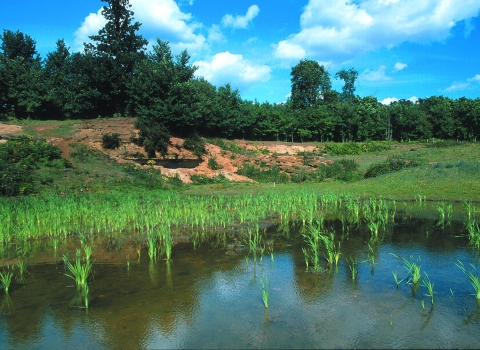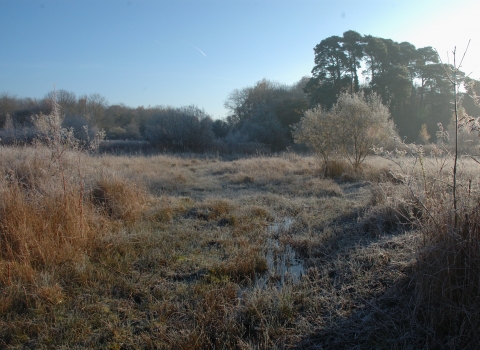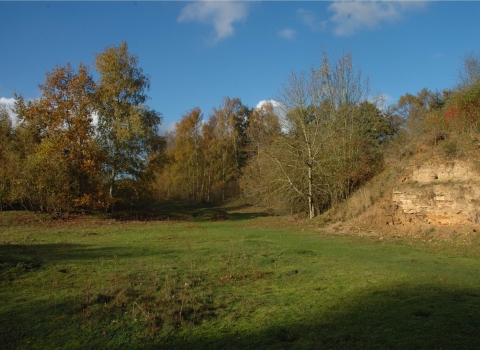Ten Foot Bridge linking the footpaths from Duxford and Buckland to the Thames Path adjacent to Chimney Meadows and the National Nature Reserve has been closed by the Environment Agency (EA) until further notice. Contact the EA on 03708 506 506 or email them.
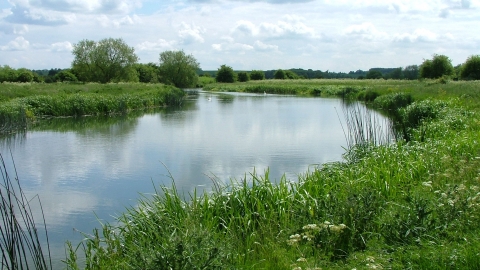
Kerry Lock
Chimney Meadows incl. Duxford Old River
Location
Know before you go
Dogs
When to visit
Opening times
Open at all timesBest time to visit
All year roundAbout the reserve
Restoring a wildlife haven
Chimney Meadows is the Trust's largest nature reserve in Oxfordshire. Its fields are part of an ancient landscape, created by the Thames and shaped by centuries of farming. BBOWT is working with landowners and other conservation organisations to restore the charismatic riverside habitats of the Upper Thames. Lowland meadows and floodplain grazing marshes are being returned to their former glory.
Discover a remarkable diversity of plant-life and spot nationally declining wading birds such as curlew, which breed here. Approximately 100 species of bird are recorded each year, making Chimney Meadows one of our best reserves for birds.
Nationally important
Part of the reserve is a Site of Special Scientific Interest (SSSI) and National Nature Reserve (NNR) and is owned by Natural England. These wildflower meadows make up one of England’s largest remaining areas of unspoilt neutral grassland. They were the seed source for the meadows that have been restored elsewhere at Chimney Meadows.
Seasonal highlights
- Spring: March hares, house martins, cuckoo, the bubbling call of curlew, and carpets of bright yellow cowslips.
- By June and July, meadows are in full flower with plants such as yellow rattle, common knapweed, oxeye daisy, meadow buttercup, quaking grass and pepper-saxifrage. Look out for holly blue, gatekeeper, comma and red admiral butterflies.
- Autumn: find otter spraint, chattering reed buntings, and roe deer grazing in the meadows.
- Winter: shy snipe, redwings and fieldfares feeding on hedgerow fruits, flocks of wigeon, teal, lapwing and golden plover.
Wonderful wetlands
Whilst Chimney Meadows lies on the Thames floodplain, it is dry for much of the year. During autumn, the River Thames starts to rise, ditches fill with water and fields can flood to varying depths, favouring different species of wildfowl and wader. The Trust is creating and restoring valuable wetland habitats like old water courses, ponds and ‘scrapes’. Scrapes are shallow depressions that hold water and provide feeding areas for wading birds.
Hides
Along the boardwalk, a large hide overlooking an area of seasonally flooded grassland provides views of heron, mute swan, teal, little egret and stonechat. At the smaller hide, which overlooks a pond, you can see long-tailed tit, marsh tit, goldfinch, dragonflies and if you are lucky, a tree sparrow or kingfisher.
Thames Observation Platform
Located on the Thames Path, this hide has views of Duxford Old River; enjoy panoramic views along the river and towards the National Nature Reserve. Look out for swallows and house martins, a kingfisher or a barn owl, and listen for a water rail and summer warblers. Generously funded by The European Agricultural Fund for Rural Development through Oxfordshire LEADER, and with support from the FCC Community Foundation, this carefully designed hide is the perfect place to stop and enjoy the tranquillity of the Upper Thames.
A Living Landscape
Chimney Meadows lies at the heart of the Upper Thames Living Landscape. Many wetland habitats throughout the country have been lost, as land has been drained or built on and wetland species which depend on those habitats have declined. However, in the Upper Thames there are still river and floodplain habitats such as wildflower meadows and wet grassland that support species such as curlew, lapwing and snipe.
Farmers, landowners and conservation organisations are working together to look after and restore the Upper Thames, a special place for people and wildlife. It is one of five Living Landscapes managed by the Trust.
Coronation Meadow
Chimney Meadows is one of three of BBOWT’s most charismatic wildflower meadows that have been named Coronation Meadows. King Charles III, as patron of RSWT, Rare Breeds Survival Trust and Plantlife, initiated the Coronation Meadows project. It celebrates the historic and extraordinary diversity of meadows, and encourages the creation of many more in the next 60 years using seeds and green hay from the Coronation sites.
Chimney Meadows, Moor Copse and Upper Ray Meadows are prime examples of a Coronation Meadow because they are rich in a wealth of wild flowers. On each reserve there are meadows which have been regenerated using green hay from nearby land. Green hay spreading is a way to move large quantities of seed from one place to another using agricultural machinery, when creating or restoring a meadow. The meadows are managed carefully using traditional farming methods, sometimes with rare breed livestock for conservation grazing. Ancient hedgerows and tracks connecting each meadow to the next are just as important for wildlife as the meadows themselves. They help to create patchworks of habitats greater than their individual parts. Coronation Meadows is supported by Biffa Award.
Duxford Old River
In 2017, following an appeal to BBOWT members and supporters, the Trust was able to extend Chimney Meadows through the purchase of Duxford Old River. The floodplain on the south side of the river lies next to an ancient meander of the original River Thames (hence the name). The 45 hectares of land at Duxford Old River were made up of five fields separated by a network of hedgerows and ditches. Following the purchase, the Chimney Meadows Wetland Restoration Project was implemented to restore the river and floodplain habitats at Duxford Old River, making it a haven for wildlife. Conservation grazing and natural processes will continue to enhance the site, with the five fields being opened as one, and the hedgerows being allowed to expand.
Thank you to our supporters
The Heritage Lottery Fund supported the Wildlife Trust in 2003 when BBOWT had the opportunity to buy the land at Chimney Meadows and transform it into a wildlife haven. Since 2013, WREN, a Landfill Communities Fund distributor, has funded management work at Chimney Meadows through the Biodiversity Action Fund. In 2017, the generosity of many individuals, several charitable trusts and the Heritage Lottery Fund enabled the purchase of Duxford Old River.
Things to do
- Come along to one of our seasonal guided walks for all ages and interests.
- There are three hides for bird watching, two with wheelchair access.
Species
Contact us
Environmental designation

Chimney Meadows nature reserve virtual tour (https://youtu.be/6pVBYOT7hGg)
Take a tour of Chimney Meadows nature reserve with Louise and get a taster of this special place
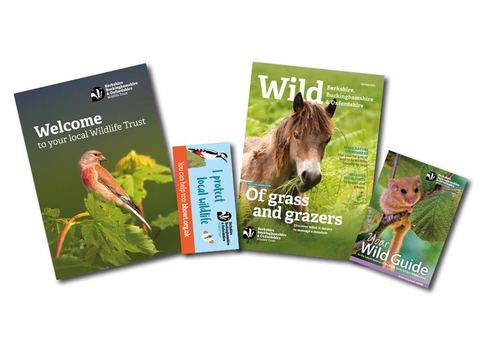
BBOWT Membership
Help protect wildlife on your doorstep and discover wonderful wild places near you.
Join BBOWT to receive our Wild Guide to Nature Reserves, Wild magazine and exclusive member benefits.

